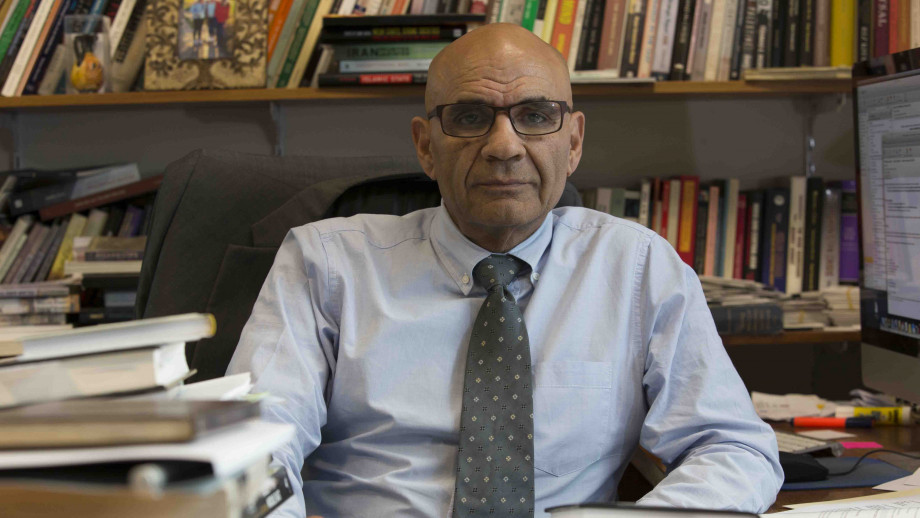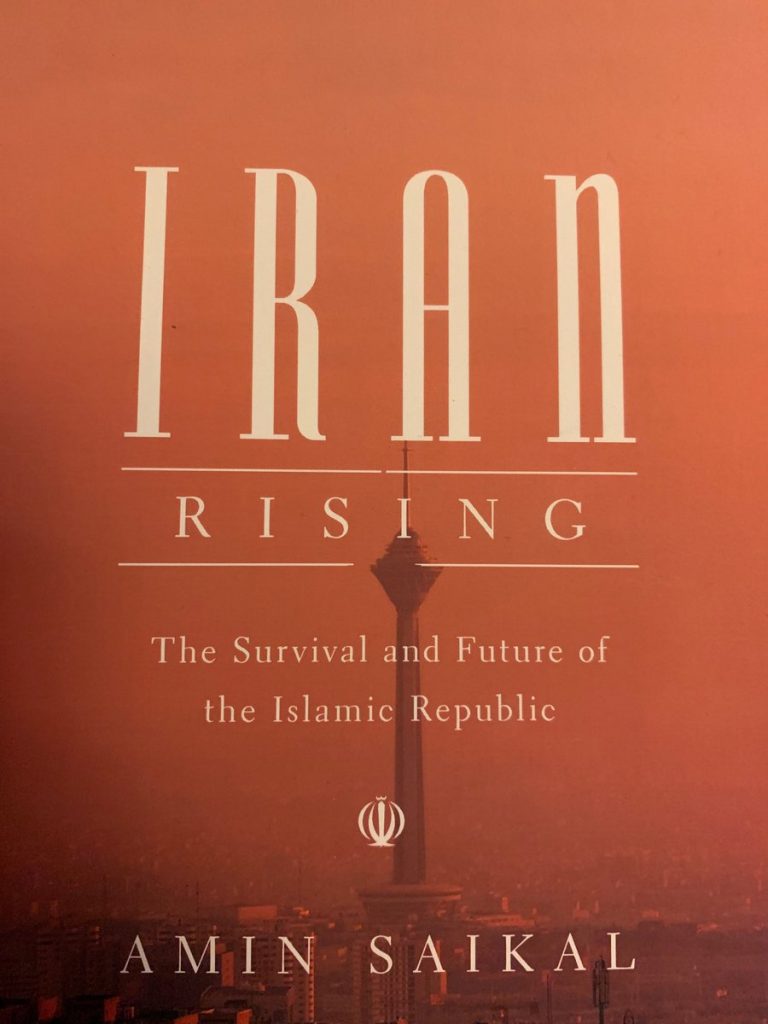Australia/Israel Review
Biblio File: Revisiting a Revolution
Jun 5, 2019 | David Menashri

 Iran Rising: The Survival and Future of the Islamic Republic
Iran Rising: The Survival and Future of the Islamic Republic
Amin Saikal, Princeton University Press, 2019, 344 pp., $43.44
The 1979 Islamic Revolution in Iran was one of the most momentous developments in the modern history of the Middle East. Some of its characteristics – the popular movement that toppled the Shah, the leadership of Ruhollah Khomeini, and its distinctive ideology – fascinated observers worldwide. The subsequent system of “Rule of the Jurisprudent” (velayat-e faqih), its policies and modus operandi, joined to turn Iran and Shi’ite Islam into a focus of public attention.
Since then, many momentous regional developments have influenced Iran, including the Iran-Iraq War (1980-1988), American-led wars against Iraq (1991 and 2003) and Afghanistan (2002) and the “Arab Spring.” The rise of the Islamic State (Daesh), Iran’s involvement in Lebanon, Iraq, Syria, Yemen, the emerging “Shi’ite Crescent,” also had a significant impact on Iran or were influenced by Iran. Finally, Iran’s nuclear program – from dispute with the West and sanctions, to dialogue and the Joint Comprehensive Plan of Action (JCPOA) nuclear deal (July 2015) to the American withdrawal from it (May 2018) and the imposition of new sanctions, and recently, the escalation in the Persian Gulf – has repeatedly seen Iran in the headlines.
Fascinating developments at home have also attracted world attention: vibrant civil society, thriving women and student movements, fierce struggles for freedom (1999, 2009 and late 2017); and on the other hand, suppression, violations of human rights and struggles for power within the ruling elite.
It is no surprise then, that with the approach of the 40th anniversary of the revolution we are witnessing a plethora of books and articles, as well as conferences and seminars, on Iran and its troubled neighbourhood.
Prof. Amin Saikal’s Iran Rising: The Survival and Future of the Islamic Republic is one of the more comprehensive attempts to shed light on this history. The author, a veteran scholar in this field, set out to analyse Iran’s foreign policy in conjunction with domestic developments. He offers some important insights, touches upon significant topics, yet overall, the book is mostly an overview of eclectic issues, rather than a piece of deep analytical research. Above all, the author seems to me somewhat biased in his selection of topics and analysis of the players.
One of his main themes seems to be that the US and its regional allies are responsible for all of Iran’s misfortunes. Undeniably, Washington committed serious mistakes in its policies on Iran, before and after the Islamic Revolution. Some of its policies hurt Iranian feelings, such as helping orchestrate a coup to remove Prime Minister Mosaddeq in 1953; supporting the Shah; siding with Iraq in its war against Iran, imposing sanctions, withdrawal from the JCPOA nuclear deal and then more sanctions. All these are discussed in the book.
However, Iran had its own share of anti-American policies, which, by and large, the author fails to elaborate on. Even before taking power, regime founder Ayatollah Khomeini termed the US the “Great Satan”; in November 1979 Iran captured US diplomats as hostages for 444 days of an ongoing anti-American “festival,” and the regime arranged for routine trampling on the US flag by placing them on the floors of the entrances to government offices. This has continued ever since. When there have been attempts to defuse tension, mainly during the Khatami and Clinton presidencies, Iranian radicals, following current Supreme Leader Ali Khamenei’s guidance, blocked them.
Indeed, as the author acknowledges, the US also provided great services to Iran’s national interests: removing Iran’s two main enemies, Iraqi President Saddam Hussein and the Taliban in Afghanistan, which was, in turn, instrumental in Iran’s emergence as a regional power. One can add to the list President Barack Obama’s nuclear deal – a precious gift courtesy of the “Great Satan.”
Yet, Teheran has a peculiar way of conveying its gratitude. Following the approval of the nuclear deal, Khamenei reiterated that the call “Death to America” is part of the DNA of the revolution. A few days before JCPOA implementation day (December 2015) Iran captured American sailors and humiliated them publicly. Throughout the negotiations, Khamenei rejected rapprochement with the US and made clear his negotiators should not have friendly relations with their American counterparts.
Moreover, Iran did not change its behaviour at home in terms of human rights and constructing missiles and intensified its adventures beyond its borders. A close associate of Khamenei, Ayatollah Taeb, claimed that Syria is Iran’s 35th province. Others said with pride that Iran controls four Arab capitals – Baghdad, Damascus, Beirut and Sana’a – or claimed that Iran’s strategic line of defence stretches “from Bab al-Mandab [in Yemen] to the Mediterranean.”
Saikal, in line with Iranian dictum, presents Iran’s military doctrine as “defensive” and views its “proxy forces” only as “political pressure” (p. 146). For the author, the onus is on the foreign powers. Thus, the book begins with the uprisings of late 2017 and already on its first page, discusses the policy of US President Trump and his regional allies of supporting the demonstrators.
The reality is that 40 years after the revolution, Iranians’ expectations for social and political justice, for welfare and freedom, have been largely frustrated. These hardships have not all been “Made in America.” It would be good to recall what President Rouhani himself said to Revolutionary Guard personnel: “Iran’s main enemy is not the US, nor Israel, but unemployment, inflation, drought, water and ecology.” One could add to the list – corruption, mismanagement, etc.
Looking inwards, a measure of pragmatism and realism is inevitable for the effective running of the Iranian state. Yet, what actual policy should be followed, how much flexibility was required, and the particular areas and pace of the advisable change, on these questions the various political trends seemed to differ, often drastically. Most scholars define two main groups: radicals versus conservatives, extremists against the pragmatists or moderates or reformists, with many sub-groups in each category.
The author’s main focus is on the moderate/pragmatic faction, not the radical/conservative one – on the elected centres of power, like the president (and his government) and Majlis (Parliament); less so on the unelected ones. Yet, real power is in the hands of the non-elected extra-governmental bodies. They include the Supreme Leader, Revolutionary Guards, the various bonyads (charitable foundations, some of them huge conglomerates), the Council of Guardians, the office of the Supreme Leader, etc.
These entities remain channels by which Khamenei exerts his influence and further weakens the pragmatists. By the nature of things, presidents, who are responsible for the effective running of the state, are more pragmatic than those leading the revolutionary institutions. Yet, their authority is limited.
By Iranian standards, Rouhani is pragmatic. Disregarding his past record, since 2013 he raised the flag of moderation and carried it a long way. The nuclear deal is the most evident example. He has made moderate statements and also radical ones.
Yet focusing attention on him and other pragmatists may be misleading. They have responsibility but lack authority. As the first prime minister after the revolution, Mehdi Bazargan, complained, he was given a knife without a blade. Rouhani says the same, with different wording. Much more attention should have been devoted in this book to the more radical factions and their centres of power.
There are also some disturbing mistakes and inaccuracies that should have been avoided. Thus, the author claims twice that Ayatollah Hussein ‘Ali Montazeri was senior to Khomeini in his religious credentials (pp. 45, 75). This is not the case. Montazeri was 20 years younger than Khomeini, and was elevated by him to the status of Grand Ayatollah following the revolution. Khomeini was behind his selection as his successor and later removed him in 1988.
Also, when the author mentions Anjoman-e Islami (Islamic Association) it is not clear to which of the multiple groups, carrying these words as part of their title, he is referring to. The author mentions as one of the power groups in Iran something called amalgaran, defined by him as pragmatists or centrists (8, 86). I know of no such group in Iran.
Finally, as a historian by training, I did not find illuminating the author’s attempt to prophesise, as promised in the subtitle of the book (the survival and future of the Islamic Regime). This may be useful to the publishers in helping to sell books, but a scholar’s task is to create and disseminate knowledge, not to sell books.
Professor David Menashri is the founding director of the Center of Iranian Studies at Tel Aviv University. He is the author or editor of ten books or monographs on Iran and the Middle East.
Tags: Iran






